Azelaic Acid: What is it , How To Use It & What Are The Benefits?
This post may contain affiliate links. That means that if you click on a link and purchase something I recommend, I will receive a small commission at no extra cost to you. As an Amazon Associate, I earn from qualifying purchases. This helps keep my website up and running and is very appreciated. Thank you for your support! Disclaimer
Hi there! Today, I wanna address one of my favorite active ingredients for being incredibly versatile, effective, and suitable for anyone prone to redness, pigmentation, or acne – which is pretty much most of us!
I think a lot of people, when they think about active ingredients, their minds immediately jump to acids. I have to admit, it can sound a bit intimidating at first, but ultimately a really sound place to start. However, the answer I have in mind might not be the same as yours. I’m talking about Azelaic Acid.
Azelaic acid is something of the underdog in the skincare world. That I’ve been always advocating its benefits , but it has literally taken years for it to get to the place where it’s actually today, something that people are googling and are interested in, and I couldn’t be happier. It’s been a long time coming, and I’m so, so grateful because . The reason for that is its utter versatility; there’s hardly anyone who wouldn’t benefit from incorporating it into their routine.
In today’s article, I’ll delve deep into why Azelaic Acid is my go-to “acid with extra” and why it deserves a spot in your skincare routine. Stick around till the end for my personal tips and tricks on maximizing its benefits for your skin. Let’s get glowing together!
What is Azelaic Acid?
If you are new to skincare, you might be wondering what the hell I’m babbling about. What is this azelaic acid? Well, reassuringly, it is a dicarboxylic acid which occurs in nature. We find it in grains, and it’s also produced by one of the members of our microbiome AKA the bacteria that live on our skin naturally. It has an impact on lots of different pathways in our skin that, when they go wrong, contribute to problems.
So, for instance, it’s anti-inflammatory. That means it’s helpful in both redness-prone skin with rosacea and acne. It’s also an antioxidant, so that means it’s powerful in helping maintain our skin’s health and good condition. And it has an impact on the pigmentation , so that means it’s excellent in treating melasma and also in helping with the dark marks that follow problems such as acne. It’s also incredibly safe, so we’re going to get into it a little bit deeper now with each of those individual conditions. You can see where it might have benefits.
If you don’t have time to read this post right now, why not save it for later?
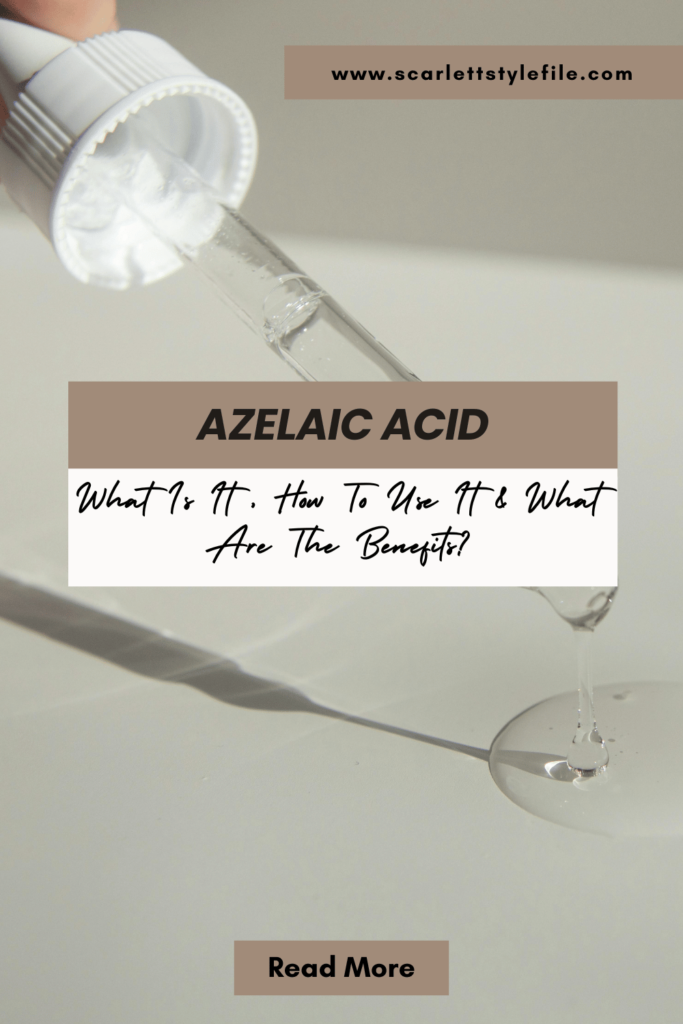
How does Azelaic Acid help with Acne?
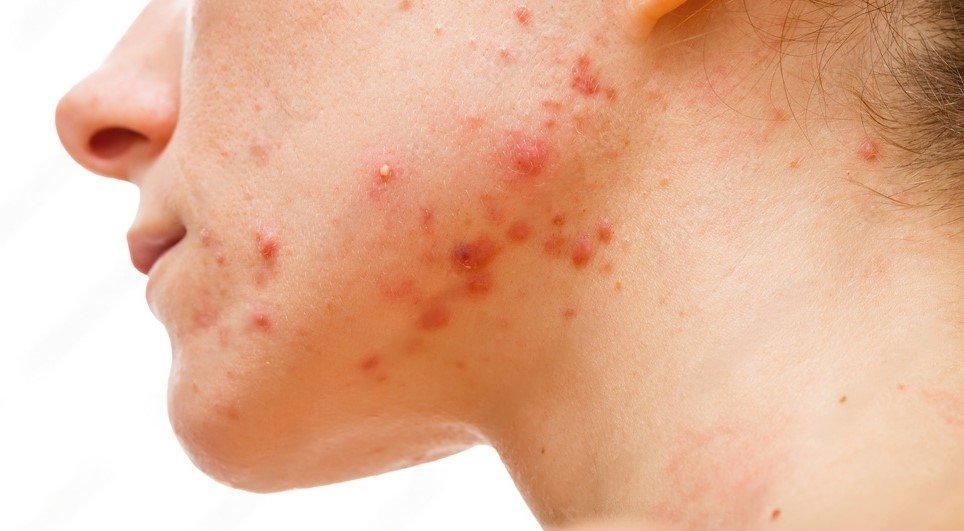
As I mentioned before Azelaic Acid has this anti-inflammatory effect, meaning it helps calm down skin reactions, but more importantly, it also impacts on the process of keratinization, which’s just a fancy word for how skin cells change , so as these cells travel from the deepest layer of the skin, called the epidermis, to the outermost layer known as the stratum corneum, they lose their nucleus (where genetic DNA material is stored) and become specialized to form our skin barrier, This barrier is like a shield that keeps bad stuff out and the good stuff in.
When you have acne , what’s happening is that the dead skin cells around your pores don’t exfoliate smoothly . Instead, they stick together and create tiny blockages known as ‘microcomedones,’ which can turn into ‘comedones‘ . On the nose, these blockages are often exposed to air and turn dark due to oxidation, which form what we call ‘blackheads‘ or ‘open comedones.‘
Along the jawline, especially with persistent hormonal acne, you may notice ‘closed comedones.’ Unlike the ones you see on your nose, these one aren’t aren’t exposed to air and blend in with your skin tone, but they become visible when light hits your face from the side. These blockages are potential precursors to more inflamed acne spots in the future.
So, when it comes to a successful approach to tackling breakouts in acne, we want to target the inflamed spots and also preventing them by unclogging the follicles and allowing everything to basically function smoothly.
So, that is why azelaic acid is such a winner. It deals with both aspects of acne – clearing up clogged pores and reducing the red spots caused by inflammation. In acne, inflammation can lead to dark marks due to excess melanin in the skin, Azelaic acid helps with that part of the puzzle t . Personally, I’ve seen quick improvements in clearing my clogged pores and reducing rednes but it’s the dark marks that persist that cause much distress. So, it’s very reassuring to have an active ingredient that literally hits all parts effectively.
How does azelaic acid help with rosacea?
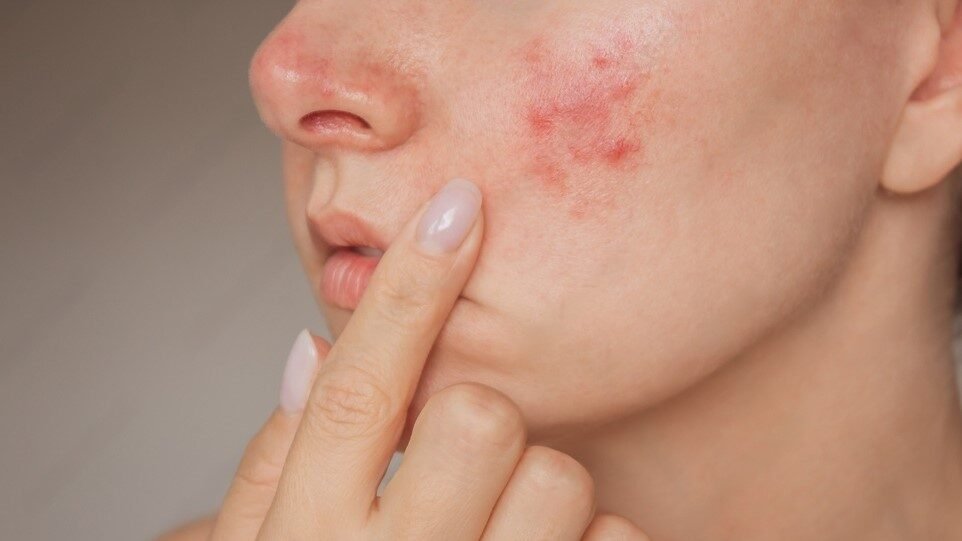
Did you know that one in ten people has the genes for rosacea? When you think about rosacea, it’s a complex disease with multiple facets to it. For some, it starts with frequent flushing, which might not sound severe, but it can really impact daily life .
Rosacea comes in various types, like phymatous rosacea which thickens the skin, and ocular rosacea affecting the eyes. But for the more common types, like erythematotelangiectatic rosacea and papulopustular rosacea, Azelaic acid is a useful ingredient. It helps to calm down the skin’s tendency to get inflamed, often triggered by factors like UV or temperature changes.
Azelaic acid works by interacting with certain receptors in the skin, toning down their sensitivity. It’s like making the fire alarm less likely to go off when it’s just the kettle boiling rather than a real fire. So, by using Azelaic acid, we’re essentially making the skin less reactive to its surroundings.
Now, having discussed both acne and rosacea, what’s truly comforting is that these ingredients are suitable for treating people with most sensitive skin disorders. This is something I firmly advocate for due to its versatility and effectiveness. In my experience, Azelaic acid surpasses simpler alpha hydroxy acids and beta hydroxy acids because of its multifaceted nature. So instead of wasting your time and money into managing multiple products each one with distinct purposes, having a single ingredient that can tackle various concerns streamlines skincare routines while fostering consistency and tolerance. Thus, it’s immensely reassuring to have this option available for treating rosacea.
How does azelaic acid help with perioral dermatitis?
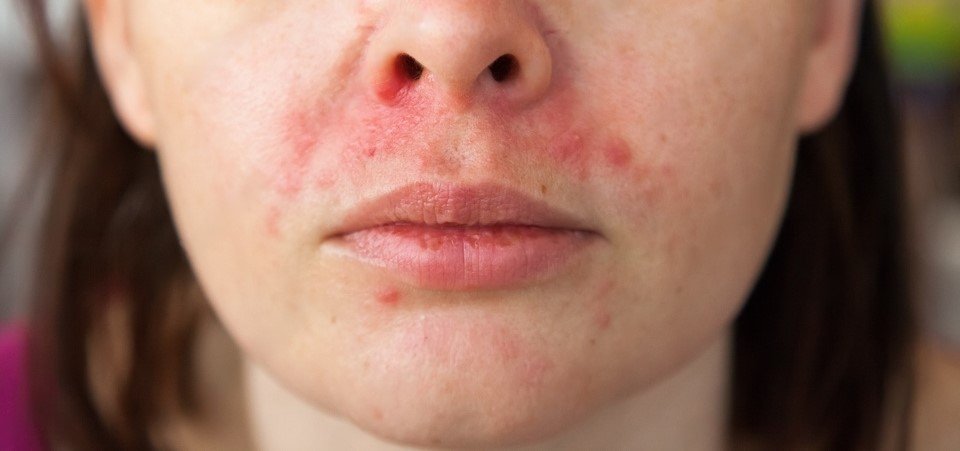
We can also use azelaic acid to treat a condition called perioral dermatitis. This condition is tricky because it causes blemishes around the nose and mouth, often in a line from the nose to the mouth and sometimes extending downward to the chin.
Unlike acne & rosacea, which involves varied bumps, Perioral dermatitis causes similar-looking bumps that may turn red and flaky. These bumps are usually triggered by something in your skincare. So, any number of ingredients can trigger Perioral dermatitis. And the simplest way to work out which of your products, which of course contain many, many different ingredients, is the trigger is by painstakingly rebuilding your routine one product at a time to ensure that you’ve isolated where the culprit ingredient might lie.
Perioral dermatitis has its own genetic factors, but simplifying your skincare routine and avoiding new, potentially irritating ingredients can help manage it.
That’s when Azelaic Acid come in handy , it’s literally as a tamer, a calmer, an ingredient that helps restore some balance and order in the skin , Using Azelaic acid can lower the chances of future skin flare-ups.
How does azelaic acid help with pigmentation?
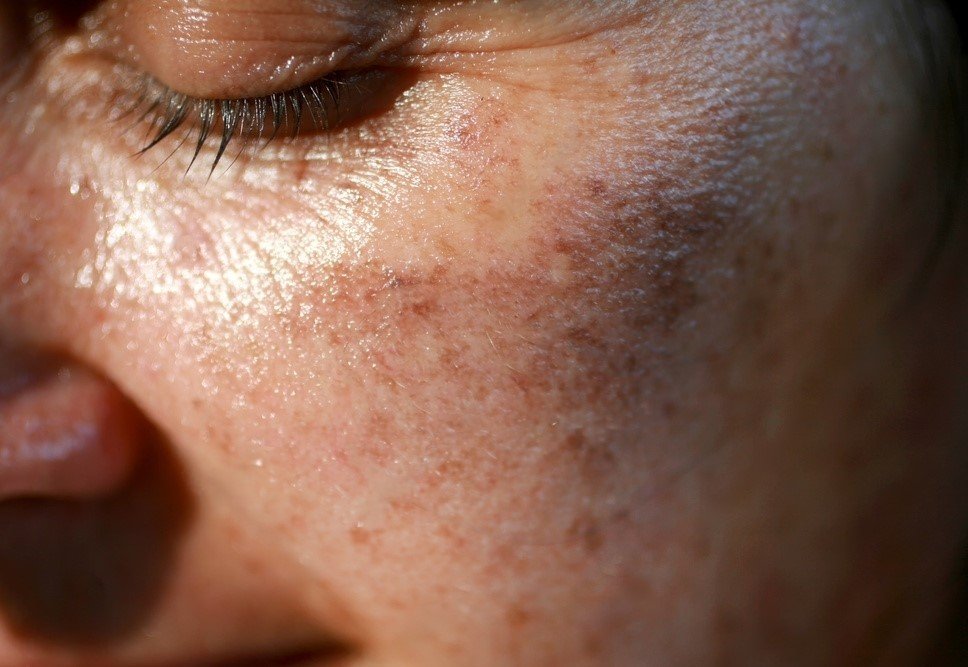
When it comes to pigmentation, it’s a common concern for many, especially as we age or if we weren’t diligent about using SPF when we were younger. Azelaic Acid is a helpful ingredient in tackling this issue. It works by calming down the activity of pigment cells called melanocytes, which can sometimes produce more melanin than needed. This excess melanin production can occur as a protective measure or as an abnormal response to UV exposure, as seen in conditions like melasma.
Azelaic acid targets an enzyme called tyrosinase, which plays a role in the overproduction of melanin, making it useful for various pigmentation issues, from mild sun damage to more pronounced conditions like melasma or post-inflammatory hyperpigmentation, which can be more noticeable in darker skin tones.
One of the benefits of Azelaic acid as I mentioned before is it versatility , it also tends to cause less irritation compared to other active ingredients used for treating pigmentation. This is important because irritation can sometimes worsen hyperpigmentation. So, it’s about finding a solution without aggravating the skin further.
Azelaic acid is a reassuring addition to a skincare routine, especially if you’re dealing with both redness and pigmentation issues. It’s a versatile ingredient that can address common scenarios like acne-related redness or melasma.
In my opinion, Azelaic acid is a lovely and dependable ingredient to keep in your back pocket for those types of situations.
How to use Azelaic acid in your skincare routine?
When it comes to using azelaic acid, I often combine it with retinoids at night. Retinoids are best used at night because some of them break down under UV light, leaving a perfect slot for azelaic acid in the morning.
If you’re new to using active ingredients, and maybe you just want to venture into using one active ingredient, which is often the smart thing to do to have one variable, starting with just azelaic acid twice a day is safe and effective. This simplifies your routine and avoids the hassle of combining multiple products.
Azelaic acid offers numerous benefits when applied all over the skin. not only it help with those key concerns I metioned before like acne , rosacea and pigmentation , but it also has the ability to brighten the skin , it can improve skin texture as well. So, it is a good general-purpose active ingredient.
Now for application, I would encourage you to try the 13-dot technique: three dots each on the forehead, cheeks, two on the side of the nose, and two on the side of the chin. This ensures even distribution without putting too much product in one spot.

I personaly when dealing with any type of skincare products , I rely on my fingertips to gauge the right amount of product. Typically, for a full face application, aim for an amount that spans from the last crease to the tip of your fingertip.
However, especially when starting out and until you get a sense of how your skin’s going to behave with whatever percentage you’re using, it’s wise to begin with half a fingertip amount . If it seems like that’s not going to go very far, use the 13-dart technique; it works wonders and really does help make a small amount go a long way. Again with these active products, more is never more, okay? You want to use the right amount for your skin, and sometimes less amount is always the right amount less truly is more, especially in the beginning stages of your skincare journey.
Remember if you’re using a huge amount too early on, that inevitably gonna lead to irritation, and you’ll be forced have to take days off, and it’ll become very, very hard to build consistency in. For instance, when introducing Azelaic acid, begin by using it every other day before transitioning to daily use; that’s the way to allow skin to develop tolerance and for you not to have a headache. Consistency is key for effective results by taking it slow and steady, you’ll avoid unnecessary headaches and ensure your skincare routine remains sustainable and effective.
Azelaic acid is quite versatile and plays well with other active ingredients, which adds to its appeal. If you’re using it alongside retinoids, it’s best to use azelaic acid in the morning and retinoids at night.
It also pairs nicely with vitamin C and niacinamide, making them a great trio for your morning routine. as they tend to complement each other’s effects. However, if you have sensitive skin , it’s wise being cautious and building them in one at a time to monitor how your skin reacts. You might find it beneficial to alternate usage, for example, using azelaic acid every other day while incorporating other products daily for their combined benefits. Consistency is key in finding what works best for your skin while ensuring it remains healthy and balanced.
The Bottom Line
In conclusion, I hope I’ve illustrated the benefits of azelaic acid as a gentle yet effective skincare ingredient. But if you need any more reassurance, know that we use Azelaic Acid in both pregnant women and those who are lactating. So again, another box ticked in terms of its versatility and usefulness.
My passion for Azelaic Acid is coming through at this point. it’s an underrated gem in the skincare world. While formulation challenges may have delayed its mainstream adoption, the benefits are undeniable. With patience and dedication, elegant formulations can be developed to unlock its full potential.
If you’ve already experienced the benefits of Azelaic Acid , you know why it’s worth your time. But for newcomers, I acknowledge that building a skincare routine can be intimidating. However, fear not, as with time, you’ll gain the confidence to take that leap, ultimately leading to happier, healthier skin.
Azelaic acid is undeniably a game-changer, and I couldn’t imagine my routine without it. I sincerely hope you too can uncover its benefits and experience the joy it brings to skincare.

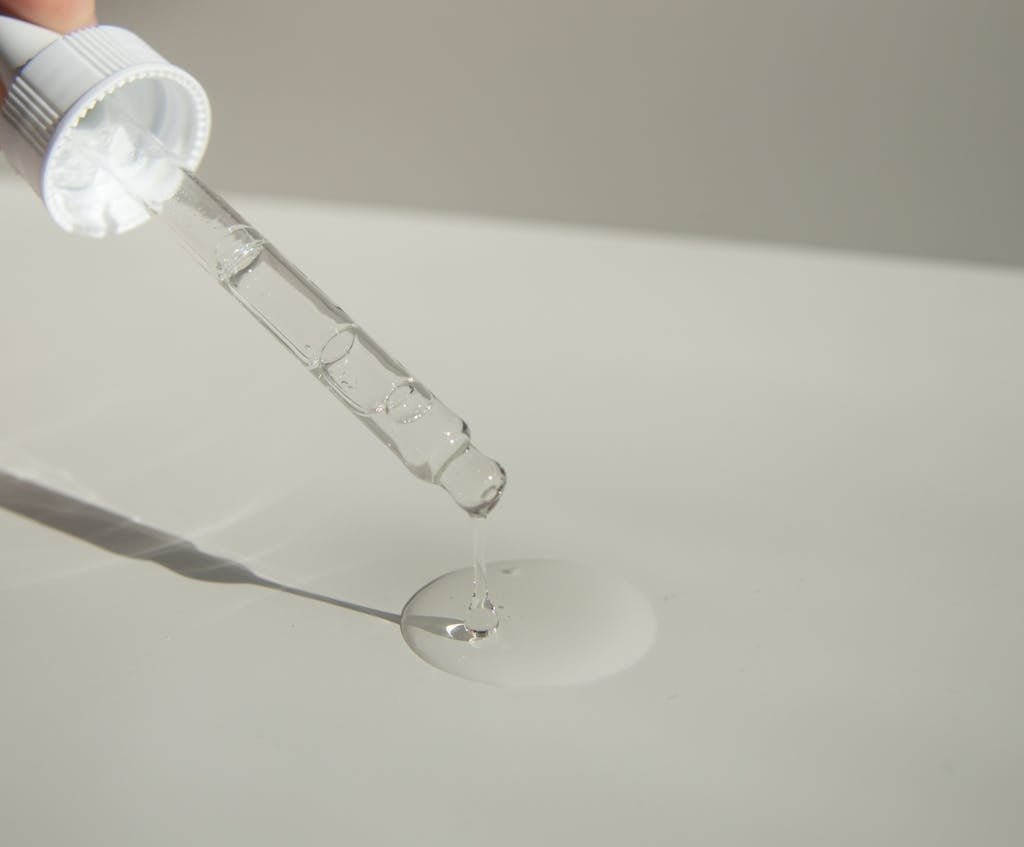


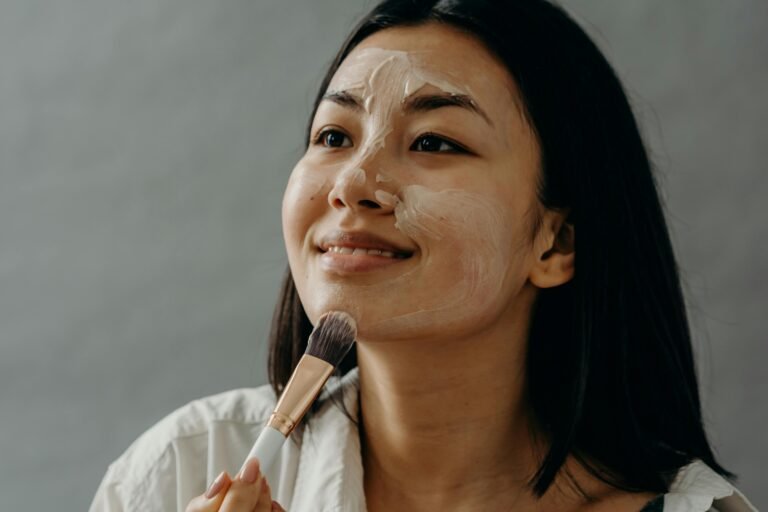

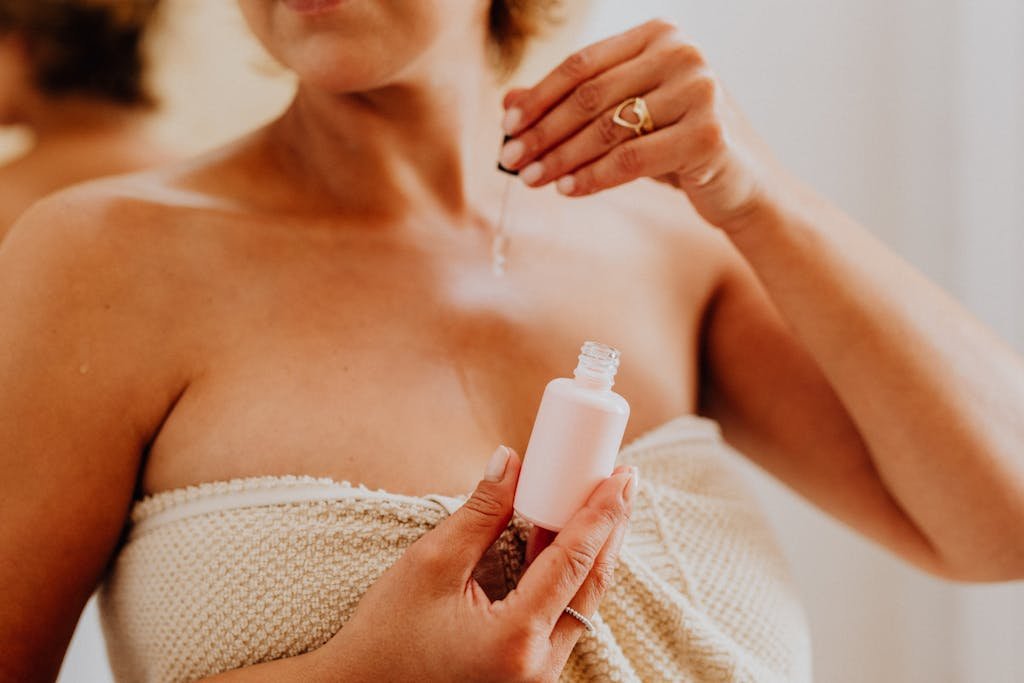
2 Comments